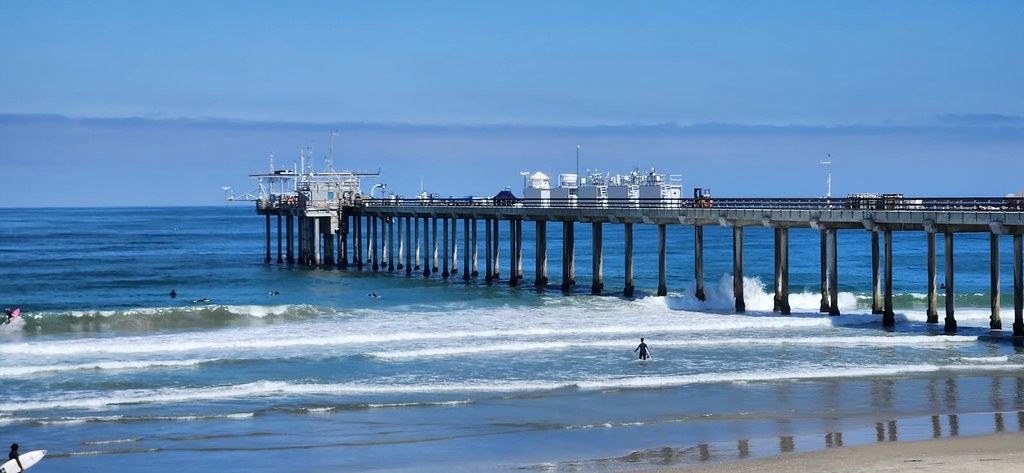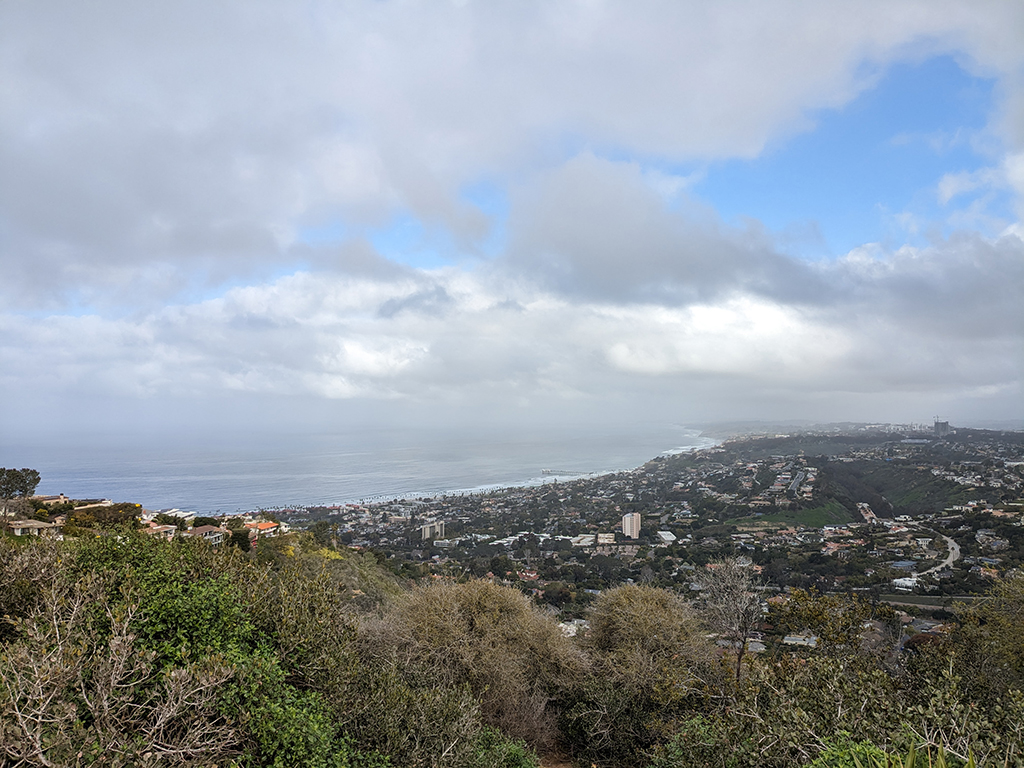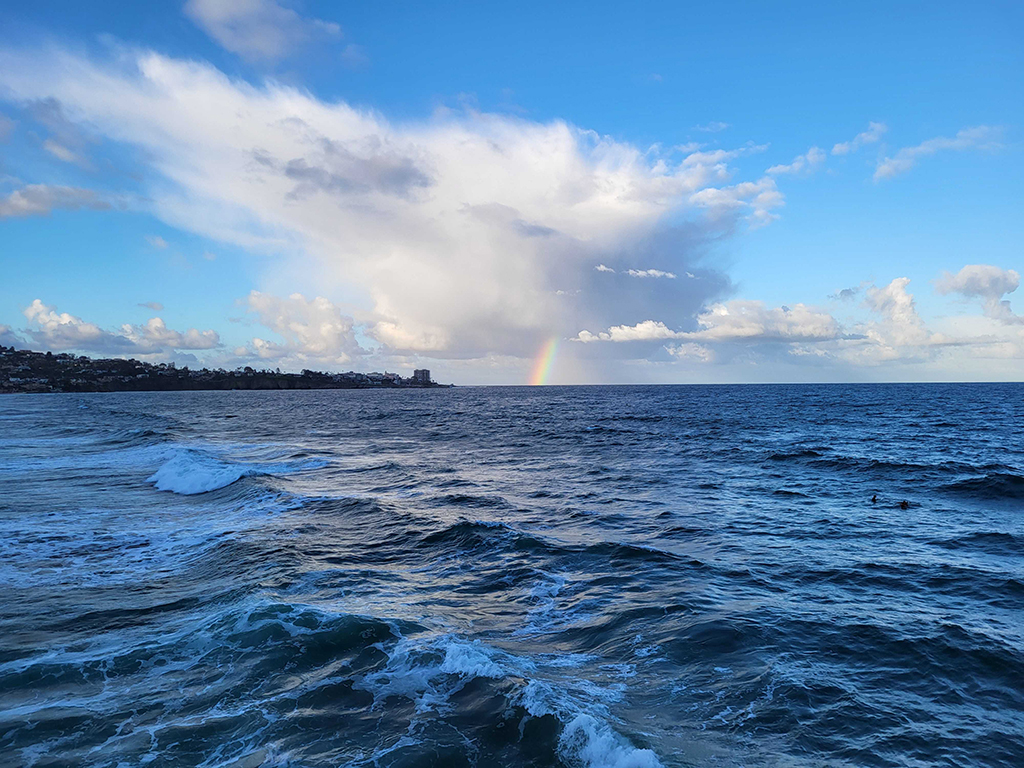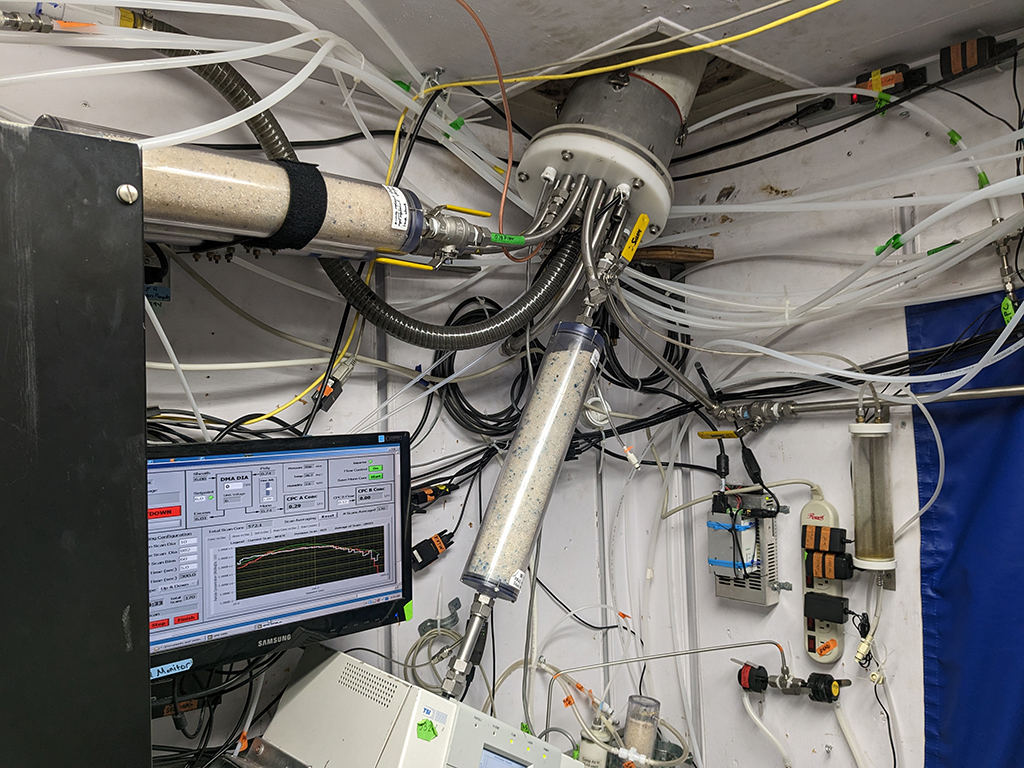EPCAPE Gets Intensive
Published: 16 November 2023
A pair of intensive operational periods pick up the pace of data collection for an ongoing ARM campaign in Southern California

Globally, stratocumulus clouds have a net cooling effect, which makes them important to study. These dense, low, and puffy clouds cover about one-fifth of the Earth’s surface at any given time, mostly over oceans.
The ubiquity and climate criticality of marine stratocumulus clouds set the stage for the 2023─2024 Eastern Pacific Cloud Aerosol Precipitation Experiment (EPCAPE), a multi-institutional, international field campaign supported by the U.S. Department of Energy (DOE). EPCAPE is investigating the chemistry and microphysics of marine clouds influenced by both the open ocean and urban coastal regions.
DOE’s Atmospheric Radiation Measurement (ARM) user facility is providing the main instruments for EPCAPE. By February 2024, when EPCAPE’s data collection ends, researchers will have access to a unique all-season, yearlong look at marine cloud properties.
Most ARM field campaigns include at least one intensive operational period (IOP). That’s when conditions are expected to be optimal for observing a particular atmospheric process or phenomenon; when the tempo of fieldwork increases; and when smaller “sibling” campaigns take place, organized by campaign collaborators and co-investigators who deploy their own instruments.
EPCAPE had two IOPs in 2023.
The first, from April through June, focused on the properties of low clouds and cloud processes influenced by chemistry. In the context of EPCAPE, low clouds were generally defined as those below 1,000 meters (0.62 miles).
The second, from July through September, focused on higher clouds and their radiative properties.
Dual Sites, Dual IOPs

EPCAPE’s principal investigator is Lynn Russell, a professor of climate sciences at Scripps Institution of Oceanography, a department of the University of California (UC) San Diego. She oversees the field campaign’s chief stroke of genius: two locations for its main and guest instruments.
One is along the Scripps Pier, jutting far enough into the ocean to capture marine influences. These influences include atmospheric aerosols—tiny particles that make cloud formation and precipitation possible.
The other EPCAPE site, about 2 miles away and 820 feet higher, is Mount Soledad. The clouds there are sometimes low enough that EPCAPE instruments are actually sampling the clouds themselves—a data-rich, chemically complex mix of gases, aerosol particles, and cloud droplets.
Both IOPs, says Russell, “were super-successful,” including conditions marked by more low clouds than expected. “For us, that was very good.”
During the second IOP, scientists targeted data collection during sunny days. But, says Russell, the unexpected surplus of cloudy days allowed for additional measurements of cloud microphysics.
Cloudy Equals Lucky
“EPCAPE was lucky to occur in a year with unusually cloudy conditions,” agrees UC Riverside professor Markus Petters, an EPCAPE co-investigator. “The observations at Mount Soledad (are providing) an unprecedented, detailed glimpse inside the microphysics of these clouds.”
Typically, he adds, observations of such microphysics are only accessible through aircraft studies.
From EPCAPE, IOPs included, “we’re already starting to analyze the data,” says Russell. “But many of the findings will, of course, take a little longer.”
Meanwhile, ARM data from EPCAPE are free to all researchers and available online. As of early November 2023, with four months of EPCAPE’s field phase to go, 131 data products and 239 primary measurements are accessible. The diverse data come from a lot of sources, from humble rain buckets to intricate radars.
In addition, Russell and her science team developed a UC San Diego portal to EPCAPE aerosol data from guest instruments on Scripps Pier and Mount Soledad. The 12 topics listed in the portal, including aerosols, cloud drops, sea spray, coastal air pollution, and particle chemistry, are a reminder of the breadth of the campaign’s science mission.
‘A Beautiful Particle-Generating System’

The EPCAPE IOPs figured into some of the initial results Russell outlined in October 2023 during the annual meeting of the American Association for Aerosol Research (AAAR) in Portland, Oregon. Many of the campaign’s observations occurred during record-breaking precipitation events.
In California’s water year measured between October 1, 2022, and September 30, 2023, the state received 141% of its average annual rainfall. Contributing to that were wintertime torrents linked to atmospheric rivers sweeping in from the Pacific and downpours brought by August’s Tropical Storm Hilary.
Other presentations at AAAR offered further glimpses at early EPCAPE results.
UC San Diego’s Sanghee Han, a postdoctoral scholar in the Russell Aerosol Lab, led an investigation on how sunny and cloudy days affect variances in aerosol chemical composition.
During sunny days, photochemical reactions drive changes in chemistry. On rainy days, trace gases end up in cloud droplets, which become chamber-like chemical reactors.
More work, of course, is bound to come out of EPCAPE and the sibling campaigns that typically unfolded during the IOPs.
For one, from April through June, UC Irvine professor Jim Smith led a small campaign called EPCAPE ─ Ultrafine Particle Properties. Like many of EPCAPE’s sibling campaigns, Smith’s effort was part of a project funded by Atmospheric System Research (ASR), a DOE program dedicated to using observations to improve the understanding of atmospheric processes and their representation in global and regional earth system models.
Smith is part of a cohort of researchers who study atmospheric particles so fine that some are just 4 nanometers across. A thousand would fit across the width of a human hair. Such particles are thought to be especially critical in forming marine clouds.
In the summer of 2023, Smith called the coastline near La Jolla “a beautiful particle-generating system operating 24/7.”
That system includes wave action, which generates a constant stream of cloud-feeding salts, gases, and bits of organic matter.
Chasing a Hypothesis

Petters oversaw a small affiliated campaign on coastal cloud chemistry, a 10-month effort that stepped up its pace during EPCAPE’s IOPs.
It all went well, he says, including getting “solid data” on cloud condensation nuclei (CCN) from both ambient air and from within clouds hovering at the surface of Mount Soledad. CCN act as seed-like platforms on which water vapor condenses to form cloud droplets.
Among other things, Petters and his team are testing a hypothesis: that the surface adsorption of gases by CCN plays an important role in cloud formation. So far, EPCAPE observations indicate that is true.
He is cautious, however, and awaits what he calls “a wide range of auxiliary data sets to place our measurements in context,” which will tell “the real quantitative story” about the role of trace gases in cloud formation.
Among the awaited auxiliary data sets that will provide regional context, says Petters, are those from the Southern California Interactions of Low cloud and Land Aerosol (SCILLA) experiment in June 2023. SCILLA was designed to gather complementary aerial data during EPCAPE’s first IOP.
Co-funded by ASR and the Office of Naval Research, SCILLA executed a series of 21 flights over land and ocean within the EPCAPE study domain. Scientists collected data on the dynamics of mixed clean and polluted air, which surface instruments on Scripps Pier and Mount Soledad simultaneously observed.
Uniquely EPCAPE
As a testament to EPCAPE’s potential, ASR included the campaign among a list of themes in a $12 million funding opportunity announcement released in October 2023. The pre-application due date is November 30, 2023.
By virtue of its long duration, “EPCAPE is unique among the studies that have investigated marine low-lying clouds near the coast of Southern California,” says Petters. “We are able to have incredibly detailed observations,” including data on marine cloud systems, the influence of seasonal cycles, and a complex array of aerosol regimes.
Keep up with the Atmospheric Observer
Updates on ARM news, events, and opportunities delivered to your inbox
ARM User Profile
ARM welcomes users from all institutions and nations. A free ARM user account is needed to access ARM data.


















